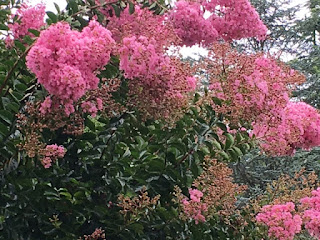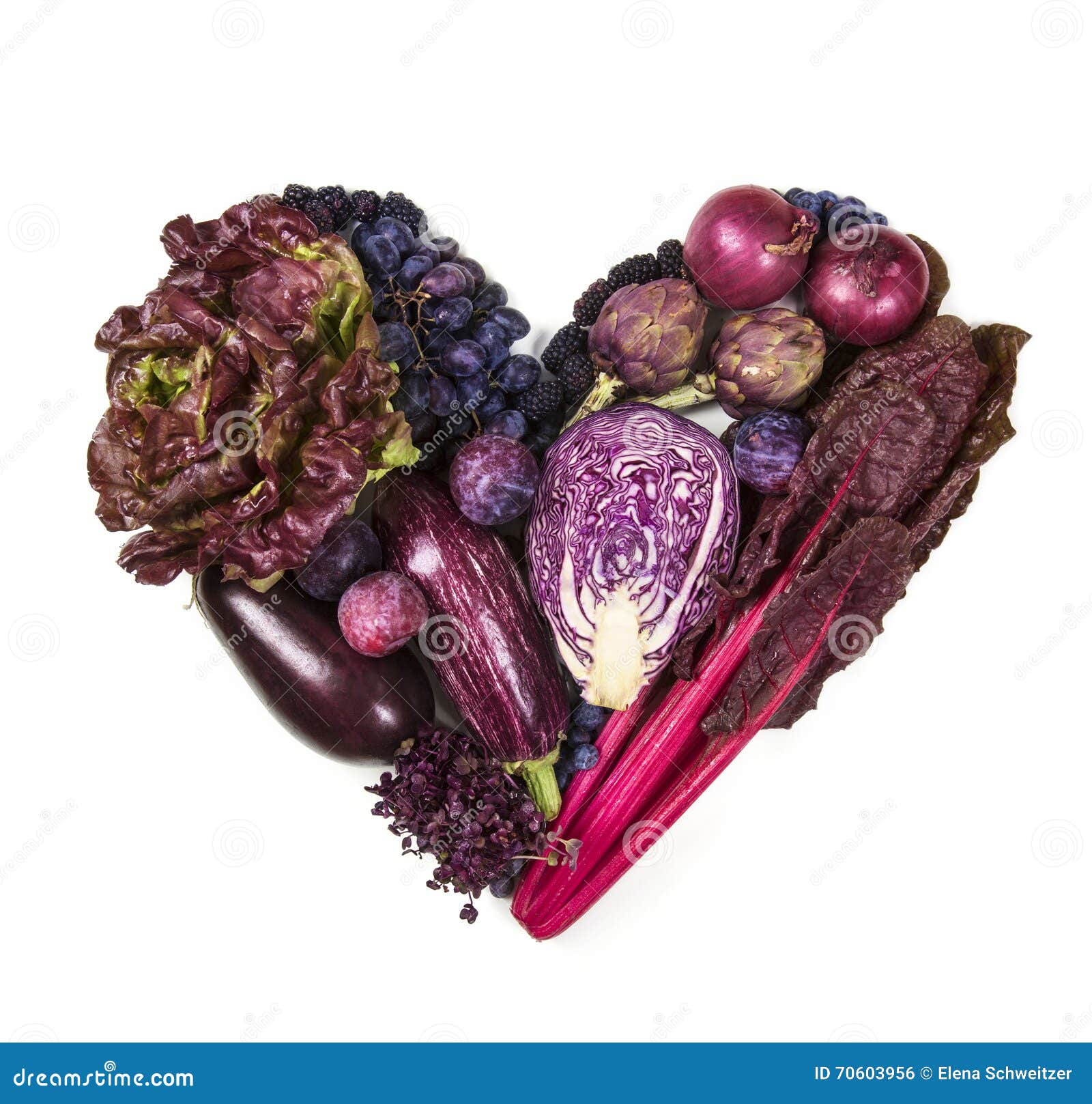
Okay, so the Pantone Color Institute may not have chosen a shade of lavender to be the hottest color for home and fashion trends for 2017. They did, however, manage to include "Twilight Purple," "Bodacious," "Grape Kiss" and even a little purple-y number called "Smokey Grape" in the spectrum of what coordinates flawlessly with the favorite chosen child this year, called
"Greenery." The nature inspired spectrum ranges from this yellow-green combo to a fiery orange appropriately called "Flame" and reflects the ever changing dynamics of the outside world we all long to bring into our homes and lives. "Island Paradise," "Primrose Yellow," "Pink Yarrow" and even "Lapis Blue" made the cut this year, too. They are colors with a modern vibe, fit for Fixer Upper with other airy shades like "Pale Dogwood," " Kale," and "Hazelnut" completing this year's Pantone rainbow. But can
somebody tell me where the color purple--
or shades thereof--
IS when it comes to the
hottest of our what's trending for 2017? Anyone??? Anyone???

Well the color purple
, or shades thereof, is showing up in the culinary world and zeroing in on healthy and fashionable eating in a big way. Just travel down a few of the aisles in your grocery store's produce section and take a gander at the stacks of blueberries, piles of fancy lettuces with their lavender and magenta ruffled edges and rainbows of radicchio showing off smooth, tasty stalks. Maybe select some iridescent bell peppers or go for the ever-ready eggplant, stalks of midnight asparagus, waxy, purple cabbage and even,
dare I say it, purple-brained cauliflower.

Don't forget the beets your mother made you eat when you were little. They are now prettier than ever and aren't those cute little bunnies raiding your vegetable garden showing off
their good taste
when they choose the purple carrots over the old orange standbys. Peter Rabbit never ate so well! The options and possibilities in eating purple and
shades thereof, are endless and all the better for you to eat healthy,
my dear! Oh, you want something a little more party-hardy? How about purple potato chips or acai berries covered in chocolate!
(I think I'm making myself hungry.) And, tea and coffee infused with lavender buds never tasted so delicious.
 |
| Lavender, fresh off the bush. |
 |
| Bits and pieces, all usable. |
 |
| Strained, cleaned and separated purple, lavender and pink lavender buds. |
Although you may not think about actual lavender buds, out there on that bush that blooms so elegantly in your yard every summer, as something at the top of your "must-eat" list, when it comes to food trends this year, it's totally in the color scope of purple--and
shades thereof--and edible things that taste really good. Next time you are looking for something special to treat your pallet to, try a few lavender buds mixed into your sugar and top that morning slice of wheat toast with it or blend a little into some sea salt and sprinkle it over your deviled eggs, chicken wings or fish patties. Maybe mingle lavender buds with a little black pepper and shake it on those juicy, thick hamburgers out on the grill.


In the mood for something that says a little more lavender and you want to go whole hog? Try some lavender-infused ice cream or lavender flavored cookies, cakes and pastries of all kinds. Who says you have to stop with grape soda? Make some easy to prepare lavender syrup and mix it with your favorite bubbly beverage like ginger ale, tonic water or vodka. Lavender syrup is great with champagne or, if you are looking for something a little more pedestrian but still very tasty, celebratory and, let's face it
cheaper, mix it with your favorite Proseco and enjoy! Salads, casseroles, spreads and toppings of all kinds are compatible with this versatile and tasty herb that has been around for centuries.
So, you want to start with something easy and tasty? Well. here it is--Lavender Sugar...

2 cups granulated sugar
2 vanilla beans, cut in half and split lengthwise and then into small pieces.
1-2 tablespoons of dried lavender (your choice of variety but I would stick with a Lavandula
angustifolia like 'Royal Velvet' or 'Buena Vista'.
In a spice grinder or blender, pulse the ingredients together until finely minced. Transfer to a jar, cover tightly and store in your spice cabinet for at least 5 days before using to ensure that all of the flavors will infuse nicely together. Use on or in wherever you normally use sugar and see how you like it. There are lots of great lavender-inspired Cookbooks out there, not to mention a plethora of recipes all over the internet. Go ahead and experiment!
PSSST!...If you are looking for lavender to cook with, craft with, decorate with or anything else you can think of to use it for, we've got it here at Blooming Hill.

 In any case, fire engine red trucks with faithful four-footed companions sitting calmly in the truck bed along with the perfect Christmas tree is portrayed just about everywhere from trays to mugs to life-sized nostalgic renditions ready for sale in modern Christmas displays. Who can resist these iconic pieces of Americana---It seems I certainly can't! Season Greetings to you and your family from Blooming Hill.
In any case, fire engine red trucks with faithful four-footed companions sitting calmly in the truck bed along with the perfect Christmas tree is portrayed just about everywhere from trays to mugs to life-sized nostalgic renditions ready for sale in modern Christmas displays. Who can resist these iconic pieces of Americana---It seems I certainly can't! Season Greetings to you and your family from Blooming Hill.



 Continued from October 30, 2017 …
Continued from October 30, 2017 …  Other plants in the love garden include lemon balm, roses, basil, catnip, daisies, peppermint mallow and periwinkle. Several of these in a sachet under your pillow might help the man of your dreams come into your life. If your love has left you, you might be instructed to put a vase of mallow flowers in your window. This should make him think of you and return to your arms.
Other plants in the love garden include lemon balm, roses, basil, catnip, daisies, peppermint mallow and periwinkle. Several of these in a sachet under your pillow might help the man of your dreams come into your life. If your love has left you, you might be instructed to put a vase of mallow flowers in your window. This should make him think of you and return to your arms.



 July 4th is one good reason to celebrate our country. It's also, at least to a serious gardener, a way to usher in high summer and relish the zinnias taking hold and savor the burgeoning vegetable garden. But, July 4th comes and goes all too quickly and the high humidity days of late July start eyeing the nasty dog days of August as it looms closer and closer until, one morning we wake up and find August is already upon us. Already?!? Where did the fresh face of June go to? It seems to me that any day after the fourth of July is a blur of daily hand-to-hand combat with the weeds in lavender beds and, that battle does not yet look to be won during these first days of August and now waning summer. (#nuclear weeds!--haha)
July 4th is one good reason to celebrate our country. It's also, at least to a serious gardener, a way to usher in high summer and relish the zinnias taking hold and savor the burgeoning vegetable garden. But, July 4th comes and goes all too quickly and the high humidity days of late July start eyeing the nasty dog days of August as it looms closer and closer until, one morning we wake up and find August is already upon us. Already?!? Where did the fresh face of June go to? It seems to me that any day after the fourth of July is a blur of daily hand-to-hand combat with the weeds in lavender beds and, that battle does not yet look to be won during these first days of August and now waning summer. (#nuclear weeds!--haha)











 When I was a little girl growing up in the Chicago suburbs, there was a commercial on television for
When I was a little girl growing up in the Chicago suburbs, there was a commercial on television for 







 Don't forget the beets your mother made you eat when you were little. They are now prettier than ever and aren't those cute little bunnies raiding your vegetable garden showing off their good taste when they choose the purple carrots over the old orange standbys. Peter Rabbit never ate so well! The options and possibilities in eating purple and shades thereof, are endless and all the better for you to eat healthy, my dear! Oh, you want something a little more party-hardy? How about purple potato chips or acai berries covered in chocolate! (I think I'm making myself hungry.) And, tea and coffee infused with lavender buds never tasted so delicious.
Don't forget the beets your mother made you eat when you were little. They are now prettier than ever and aren't those cute little bunnies raiding your vegetable garden showing off their good taste when they choose the purple carrots over the old orange standbys. Peter Rabbit never ate so well! The options and possibilities in eating purple and shades thereof, are endless and all the better for you to eat healthy, my dear! Oh, you want something a little more party-hardy? How about purple potato chips or acai berries covered in chocolate! (I think I'm making myself hungry.) And, tea and coffee infused with lavender buds never tasted so delicious.


 In the mood for something that says a little more lavender and you want to go whole hog? Try some lavender-infused ice cream or lavender flavored cookies, cakes and pastries of all kinds. Who says you have to stop with grape soda? Make some easy to prepare lavender syrup and mix it with your favorite bubbly beverage like ginger ale, tonic water or vodka. Lavender syrup is great with champagne or, if you are looking for something a little more pedestrian but still very tasty, celebratory and, let's face it cheaper, mix it with your favorite Proseco and enjoy! Salads, casseroles, spreads and toppings of all kinds are compatible with this versatile and tasty herb that has been around for centuries.
In the mood for something that says a little more lavender and you want to go whole hog? Try some lavender-infused ice cream or lavender flavored cookies, cakes and pastries of all kinds. Who says you have to stop with grape soda? Make some easy to prepare lavender syrup and mix it with your favorite bubbly beverage like ginger ale, tonic water or vodka. Lavender syrup is great with champagne or, if you are looking for something a little more pedestrian but still very tasty, celebratory and, let's face it cheaper, mix it with your favorite Proseco and enjoy! Salads, casseroles, spreads and toppings of all kinds are compatible with this versatile and tasty herb that has been around for centuries.